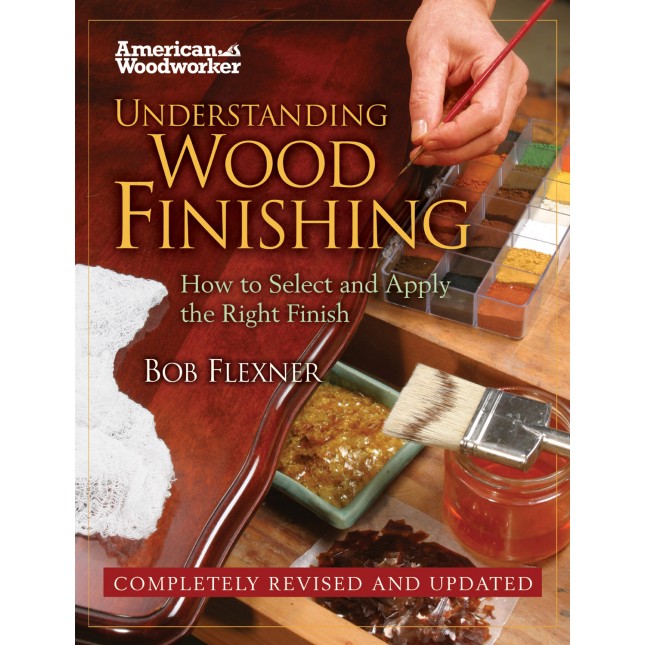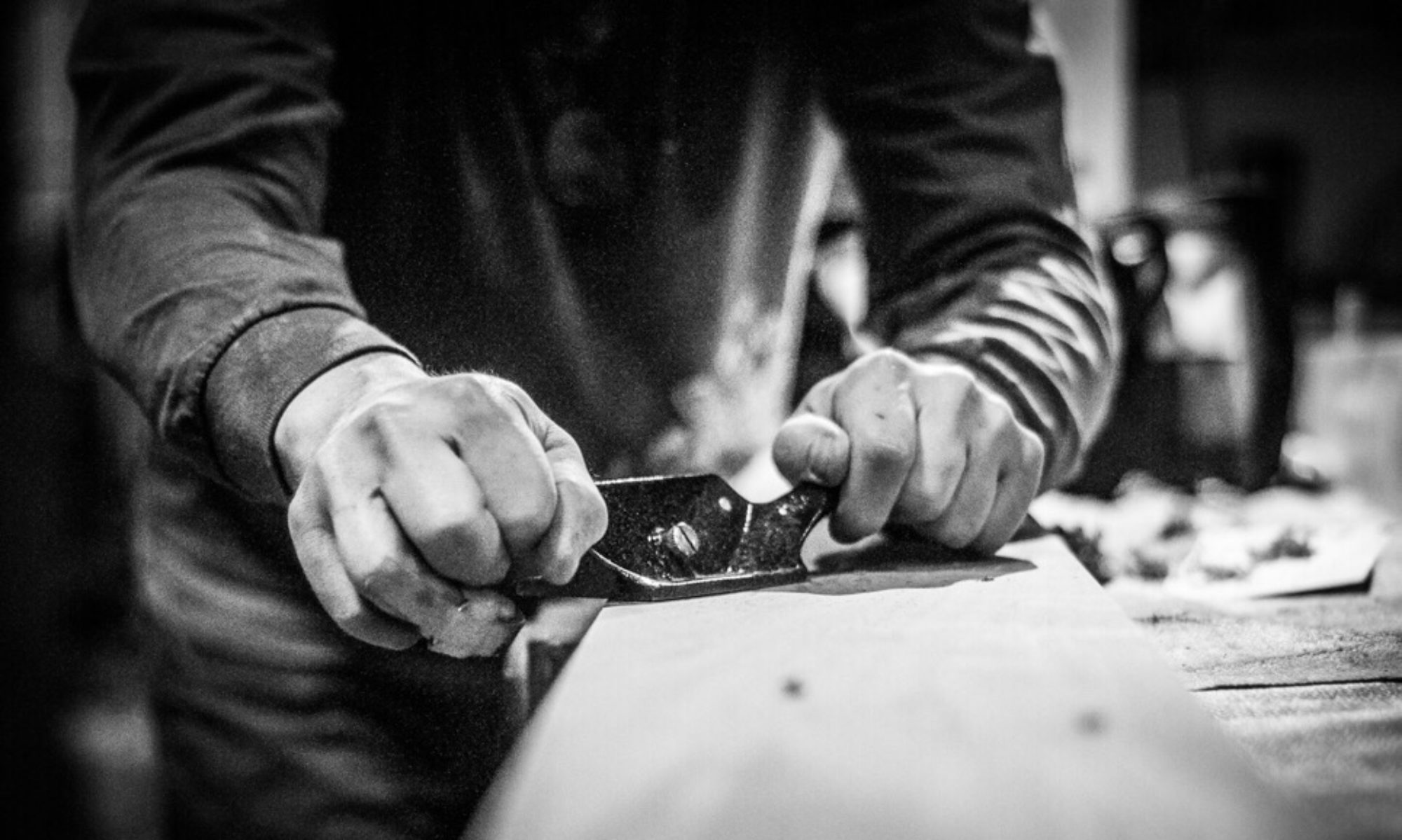
I’ve always avoided learning more about finishing because it seems so complex. There are so many types of finish to apply and so many ways to apply them. When I was new to finishing and heard about oils, varnishes, lacquers, waxes, dyes, stains, solvents, and thinners, I pictured the master finisher as an alchemist, mixing mysterious substances in beakers in his candlelit lab. One look at the cover of Understanding Wood Finishing is enough to intimidate you. He’s mixing potions! Applying a finish with professional results seemed to require a mastery of some mystic art, with the artisan reciting an incantation as he brushed the concoction onto the wood. This is an elaborate process right? What exactly is a varnish, anyway?
Because of this, I’ve just stuck with shellac. I’ve learned how to apply it well enough, and it’s natural so I feel good about not harming the environment with harsh chemicals. But reading this excellent book has completely changed my thinking on finishing. The concepts aren’t all that complex, and now that I have a basic understanding of finishing, I’m actually excited to try some new finishes on my projects. Flexner has lessened my environmental concerns by explaining that the laws aimed to curb VOCs are meant for production shops. The volume contributed by hobbyist woodworkers is minuscule in comparison to industry.
Flexner starts the book by teaching you how to prepare the wood surface and use the tools to apply a finish. Next he gets into staining wood and explains the difference between pigments and dyes. The book is thorough. Want to bleach your wood? Ebonize it? He’s got you covered. He then addresses wax, oil finishes, and filling the pores. Next time I have a project that I want to fill the pores on, I’m going to use a filler that’s slightly darker than the wood to create the appearance of greater depth.
Did you know shellac is a resin secreted by an insect? It’s scraped from the branches of trees, melted down and formed into thin sheets from which the flakes are created. If that didn’t blow your mind, try this: it takes about 1.5 million lac bugs to make one pound of shellac.
These topics get a little complex, but after reading the chapters on lacquers, varnishes, and water-based finishes, I’m eager to try some varnishes. They’re the most protective and durable, and provide a good resistance to water vapor exchange in the wood. It’s here that I learned that oil-based polyurethane is more durable and heat resistant than water-based. Interesting factoids are peppered throughout the book, like this one: all film finishes with the exception of shellac are essentially plastic.
It’s true that there’s a lot to know about finishing. But unless you’re planning on making a career of it, you can get by with just a moderate amount of finishing knowledge. Are you running a production cabinet shop? If not, you don’t need to mess with two-part finishes. Don’t have a spray gun? Not into french polish? You can safely skip that stuff for now. I’m not going to be doing much if any staining, so I don’t need to retain any of that stuff, but it sure was interesting reading about it. I was apprehensive about finishing in the beginning, but it turns out that I find it one of the most fascinating woodworking subjects. Not to mention useful. This is one of the few woodworking books I know I’ll keep coming back to.
